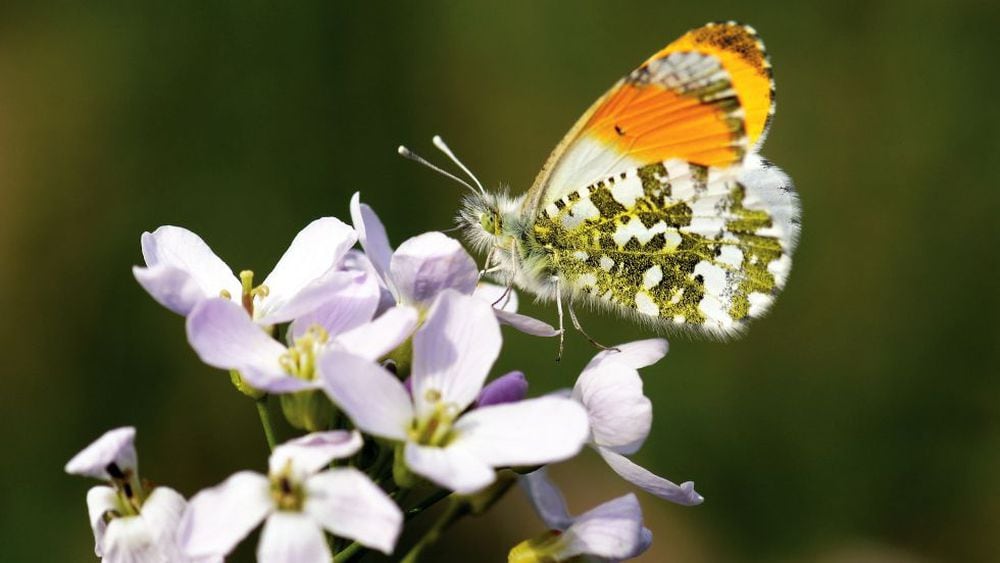With insects there is a disturbing paradox: entomologists have been warning for a long time that there are more and more alarming signs about their situation (people of a certain age can even perceive for themselves that something has changed in the field), however, since From a scientific point of view, the lack of continuous data on the populations of these little beings makes it very difficult to gauge the true scale of the problem.
And this in turn also complicates the possible answer.
Now a study by researchers from the National Museum of Natural Sciences (MNCN), the University of Murcia and two British institutions, published in
Biodiversity and Conservation
, shows that this barrier to knowing what is happening with these arthropods does not disappear even with the most complete inventories that exist.
"We wonder what the best insect data in the world are and we found that these are those of butterflies in Great Britain", says Jorge Lobo, entomologist at the MNCN, who explains that there are more than 10 million records of 58 species of lepidoptera in this territory collected for more than 200 years, from 1800 to 2014. An exceptional amount of information for insects only available in rare places like this because of the great British naturalistic fondness and because of the specific attraction to the beautiful butterflies.
Although there has already been talk of the "insect apocalypse", there are different complications to scientifically demonstrate the collapse of these animals.
As Lobo points out, one of them is that strong interannual variations in their populations are common among these arthropods, with sharp drops and rises.
It may happen that a simple storm at the wrong time or a strong impact of human origin causes specimens of a species to fall in a certain area and that some time later their number multiplies again.
To determine that a decline is really taking place, continuous inventories are needed to be able to compare in different places and over long periods, which is quite rare for these species on the planet as a whole.
In the case of the butterflies of Great Britain, with so many records from 1800 for a not so high number of species (there are almost the same number of lepidopterans in the city of Madrid) one might think that everything is already known about the distribution of these insects in this area of the world.
According to the MNCN researcher, "the surprise we get is that no."
The Spanish scientists detected that the inventory was incomplete in a third of the analyzed territory, specifically, in quite a few places in the north of Great Britain.
“We wondered why and realized that this is due to the entry into these northern areas of species that come from the south.
Nature is dynamic and that is why our ability to detect what is happening is limited ”, emphasizes Lobo.
Despite their size, insects can move for miles to seek better conditions, which again makes it difficult to know what is happening.
"Sometimes there is not so much an extinction as a change in the distribution", indicates the researcher.
"What we have today does not allow us to know the truth, because the moment we get enough information, the truth has changed," he says.
Even so, this does not remove the mountain of evidence that warns of the retreat of these arthropods.
As Lobo warns, there are worrying data: "We are enough scientists who assure that there is a decline in insect populations and a notable loss of biodiversity."
Investigations in Germany, the United Kingdom or Puerto Rico have registered incredible collapses of the biomass of insects, that is, of the weight of these animals in certain areas.
And, in Spain, the MNCN researcher himself has verified a drastic fall in dung beetles (those that build and roll balls of excrement).
In the collections of this family of beetles prior to 1950, around 30% corresponded to baseball players, but currently they do not reach 5%.
"White and in the bottle, the difference is so noticeable that there are no other explanations," says Lobo.
However, there are other discrepant results.
Also in Spain, a 2018 study by researcher Carlos Herrera in the Sierra de Cazorla found no decline in pollinator abundance between 1997 and 2017 despite significant changes in temperature or rainfall, suggesting that the reduction is not same everywhere.
A review of 73 scientific papers published in 2019 in
Biological Conservation
, by the Spanish ecologist Francisco Sánchez-Bayo, from the University of Sydney (Australia), warned that at the current rate 40% of insect species could become extinct in the coming decades .
But shortly afterwards, Finnish scientists from the University of Jyväskylä responded to this article with an analysis in Rethinking Ecology in which they accused the research of being alarmist and criticized some aspects of the methodology, without questioning the decline of the insects.
“The pattern that emerges is worrying, but we have only point data.
From a scientific point of view we should not be alarmist if the data are not completely reliable, but the signs are alarming and it must be said, ”says Lobo.
How to remedy the lack of reliable data if even the best collections of records in the world are not enough?
To solve this lack of information, taking into account the dynamic movement of nature, the researchers in this study consider that each country should choose a series of areas to carry out continuous inventories.
Just as there are fixed meteorological stations that record the variations of the weather at each moment, they propose that there be biodiversity measurement stations.
To know the most important news on Climate and Environment of EL PAÍS, sign up here for our
weekly
newsletter
.
Follow the Climate and Environment section on
and












/cloudfront-eu-central-1.images.arcpublishing.com/prisa/KMEYMJKESBAZBE4MRBAM4TGHIQ.jpg)


